How Alexander Yaroslavich defeated the Swedish knights
By the middle of the XIII century, with the organizational beginning of Catholic Rome, between the three feudal Catholic forces of Northern Europe - the Teutonic (German) Order, the Danes and the Swedes - an agreement was reached on a joint action against Novgorod Russia in order to conquer the north-western Russian lands and planting there is catholicism. According to Rome, who was then the main "command post" of Western civilization, after the invasion of Batu, bloodless and plundered, fragmented and disunited Russia, where each prince "pulled the blanket over himself," could not provide any serious resistance.
This was the main reason for the joint performance of the Swedes, Germans and Danes. They wanted to subjugate and plunder the Russian lands, and especially they were attracted by the rich Novgorod. German and Danish knights were supposed to strike at Novgorod from land from the Livonian possessions, and the Swedes were going to support them from the sea through the Gulf of Finland. On the eve of his campaign, for a personal acquaintance with the Novgorod prince-warrior Alexander and at the same time to explore the territory and the situation, the German knight “God's servant Andriash” - Andreas von Velven, vice-master of the Livonian Order visited Veliky Novgorod.
In 1240, with the blessing of papal Rome, the Swedes were the first to invade Russia, planning to seize the Nevsky Corridor, leading from Novgorod to the Baltic, and then to the capital of Northern Russia itself. To march on Rus, the Swedish government in the person of King Eric Eriksson "Kartaviy", the Yarl (prince) Ulf Fassi and the son-in-law of King Birger gathered a large army. There were quite a few hunters who could still profit from the Russian lands that had not been ravaged: Swedish spiritual and secular feudal lords led by personal squads, knights of crusaders with their squires and servants. The chronicler also mentions "Murman", that is, the Norwegian or Danish knights-feudal lords, and auxiliary detachments from the conquered lands of the Finnish tribes. King Eric Eriksson "Burr" managed to march on Rus powerful for those times for the Northern Europe army. The invasion of the enemy began at the beginning of July 1240, when the Swedish fleet in the number of about 100 ships with 5-thousand troops of the Swedes and their allies under the command of Jarl Ulf Faci entered the r. Neva. Each seagoing ship bore 50 to 80 warriors and shipbuilders, and could carry 8 war horses.
Alexander Yaroslavich, to his credit, was ready for an enemy strike. Already in 1239, he took care of not only the protection of the western, but also the northern borders of the Novgorod land. The prince established the "sea guard" of the shores of the Gulf of Finland and the Neva River. The places there were difficult to reach and the paths ran only along the water or along the rivers. To the south of the Neva River between Votskoy (from the west) and Lopskaya (from the east) Novgorod Volosts was Izhora land. Here lived a small Finnish Izhoran tribe, friendly to Novgorod. The majority of Izhorian were still pagans, but the process of adopting Christianity was already gaining momentum. The elder of this tribe, Pelgusia, was entrusted to Prince Alexander Yaroslavich by the “sea guard”, that is, to guard the ways to Novgorod from the sea. The "guard" Izhoryan, apparently, stood on both sides of the Gulf of Finland, as stated in Alexander Nevsky's "Life" - "at the edge of the sea, I watch the wallpaper of the path." It is clear that the mouth of the Neva River was most vigilantly watched, from where the old waterway from the Baltic Sea to Ladoga began, and further along Volkhov to Great Novgorod itself.
Once, at the dawn of July 1240, when Elder Pelgusius was personally in the “guard of the sea”, he suddenly “heard the noise is terrible at sea”. This was the Swedish military flotilla, in which the ships were "many evil." Elder Izhoryan hastened to send a “two-horse” messenger to Novgorod in order to warn the Prince of Novgorod about the enemy invasion. So, thanks to the prudence of the Russian prince, an unexpected attack by the enemy on Russian lands did not occur.
The significance for Sweden of this aggressive campaign can be judged at least by the fact that the feudal army was personally led by the second and third persons in the state after the king himself - Earl Ulf Faci and his cousin, the royal son-in-law Birger, who became Xarnum years old, the two largest Swedish feudal lords. They themselves could put the whole army. The plan of the Swedish leadership consisted of the following: disembarking troops on the banks of the Neva and going to "fight" the city of Ladoga, a strong Novgorod fortress, located not far from the place where the Volkhov River flowed into Lake Ladoga. Earlier, the Swedes had already made an unsuccessful attempt to seize Ladoga, which was the ancient capital of the north of Russia.
The seizure of the Neva coast and fixing on them (the construction of several strong fortresses), closed for Novgorod and Russia as a whole, the exit to the Baltic. The Neva, who came under the authority of the Swede, made it possible to block the sea trade routes of Novgorod, as well as the land of the cities friendly to the free city of the Karelians and Finns, which facilitated their conquest of Sweden. The fall of Ladoga, the northern Russian stronghold on the Volkhov, opened the way to Novgorod the Great itself. Ladoga became a springboard for the attack on Novgorod.
The Swedes were confident of victory. Vladimir Russia was ravaged, weakened and could not provide effective assistance to Novgorod. In addition, the strike was prepared in secret and was going to win and gain a foothold in the Novgorod lands to the possible approach of Russian reinforcements from other lands. Confidence in victory allowed the Swedish military leaders not even to rush to the exit of the fleet to the expanses of Lake Ladoga. The Swedish army landed in the place where the Izhora River flows into the Neva River with the tributary Bolshaya Izhorka. This place is called Bugri.
Parking was temporary. The ships moored to the left Nevsky shore and anchored. The ships stood in two rows: board to board, nose to nose. Fairly wide gangways have been transferred from the augers to the shore, and bridges between the ships. Sailors and many ordinary warriors who did not have tents, slept on the decks of augers. Swedish commanders, knights, bishops, their squires and servants spent the night in tents on the shore. Horses brought from the courts on solid ground. The Swedes set their camping tents on an elevated dry place. For the royal generals, the servants placed a large, gold-sewn tent on the knoll, well visible from all sides. A rather wide glade was spread around the camp.
Swedish commanders were so confident that they didn’t even set up a long-range guard. The Swedes put only sentries around the tents, and watchmen were awake on augers. Apparently, the Swedish commanders were waiting for a convenient moment for further movement of the fleet. Ahead of the Neva, there were rapids that hindered the movement of deep-sea vessels. The augers were ships specially built for sea voyages. At that time, river reefs divided the deep Neva into two branches and greatly hampered navigation along it. Thresholds were overcome with good wind and oars. This circumstance forced the ship crews of the Swedes to become a temporary camp in a place convenient for them and to wait for a favorable moment (favorable wind) to continue the march to Ladoga. The Swedes, who often marched on Novgorod lands, knew the waterways to the Russian fortress well. However, as the fortress itself. In addition, it is possible that the Swedes were waiting for reinforcements.
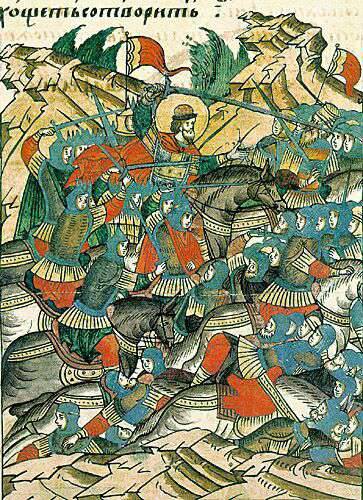
Neva battle. Facial Chronicle of the XVI century
Novgorod prince Alexander Yaroslavovich, having received a hurried report about the arrival of a numerous enemy army on the Neva coast, gathered his squad. The young prince did not hesitate in choosing a solution. He ordered to immediately speak out against the Swedes, who entered the threshold of the Novgorod land. Alexander decided not to wait for the gathering of the Novgorod militia, which took time and intercepted the strategic initiative, attacking a strong enemy on the move. In the campaign, Alexander Yaroslavovich took with him a small army: 300 cavalry princely warriors, 500 selective Novgorod horsemen and 500 foot militias. The prince was in a hurry to deliver a preemptive, sudden blow to the enemy. He could not know from the scouts of Izhoryan, who knew the terrain well, that there were at least three times more Swedes on the banks of the Neva than the troops that were at hand. However, this did not stop him. Alexander planned to bring the Novgorod army to the Swedish army as quickly and secretly as possible. In the surprise of hitting his plan was built. As a result, the Rus “ide on them (the Swedes) in the small retinue”.
The Russian army forced a march, without carts, moved to the Neva in order to catch the enemy in the camp near the mouth of Izhora and not allow him to attack Ladoga. The infantry marched down the Volkhov in the assaults (ships). The cavalry marched along the riverbank. The speed of movement of the Russian cavalry brigade is best indicated by the fact that the distance in 150 km, if the riders were traveling "vborzze", "about a two-horse", was usually overcome in 12-14 hours. Ship's army on the river moved even faster - helped for, sails, oars, the lack of natural obstacles. Alexander came to Ladoga, took 150 soldiers from there. Apparently, a sufficient garrison was left in the city, since Ladoga could have deployed a more significant militia.
From Ladoga the Russian army moved to beat the discoveries. Elder Izhoryan Pelgusy along with his scouts continued to observe the enemy. Therefore, the prince of Novgorod promptly received all the latest news about the swedish army. Reliable information about the Swedes allowed Alexander Yaroslavich to seize the initiative and act decisively, to be proactive. From Ladoga, foot soldiers marched on riverboats on Lake Ladoga and Neva, and princely and boyar cavalry on the left bank, overcoming the hard way over 120. Near the rapids, which blocked the Neva before the river Tosna flowed into it, at the sharp turn of the high left bank, the cavalry and foot army united. Then it was dangerous to go along the Neva on ships, a wide reach opened beyond the thresholds, and the Swedes could notice the enemy coming from a distance.
Novgorod ships left early in the morning of July 14 to the river Tosna, where they joined up with horsemen. Then the Russian army passed about six kilometers along the river. Now the Swedish camp was very close. The scouts-Izhorians, who were waiting for the Novgorodians, led the united Russian army along well-known paths through a hill covered with dense forest. Thawing from the enemy, the troops marched along the bank of the tributary of the Izhora - Bolshaya Izhorka. The trackers moved silently ahead.
Thus, Alexander was able to quietly bring the army to the enemy. A few kilometers from the enemy, our soldiers made a halt. Having received the latest information from the scouts, Izhoryan, and possibly sending forward his scouts, the prince himself and his closest comrades could also go on reconnaissance, Alexander made a battle plan.
Map of the Neva Battle 15 July 1240. Source: Bloodless L. Atlas of maps and schemes for the Russian military stories. M., 1946
Battle
Prince Alexander decided to attack the enemy camp at about noon, at one o'clock when the Swedes would cook dinner. The cavalry princely-boyar squad struck a powerful blow to the center of the Swedish camp, against an enemy who was not ready for battle. Part of the Novgorodian cavalry with the Ladozhans struck at the enemy’s right flank. The swiftness of the cavalry attack doubled the power of the surprise attack. Along the Neva, a foot army of Novgorod advanced on the left flank of the Swedish army. “A Novgorodian named after Misha (he later became a posadnik in Novgorod) you drink these things with your friends.” Foot soldiers had to separate the enemy: to cut off the knights living in tents on the shore and their servants from soldiers and sailors who were on ships and who were not immediately able to join the battle on the shore. The Russian commander made a bet on the confusion of the enemy at the moment of a sudden strike on him. The knights and their heavily armed warriors simply did not have time to prepare for battle. In the event of a swift attack, the knightly part of the Swedish army was trapped in the corner formed by the Neva and Izhora. Here the knights were deprived of the possibility of flight on ships, they could be thrown into the water or forced to surrender. The prince sent dozens of Izhorian warriors to the other side of the Izhora River to guard those Swedes who could have escaped from the battlefield. The Izhoraans apparently crossed over to the ford at the confluence of Bolshaya Izhora and Izhora and hid in the coastal thickets.
In the 12 hour, the Russian squad and foot army, having trackers Izhoryan ahead of them and outposts, just in case, went unnoticed to the Swedish camp. At the sign of Prince Alexander Yaroslavovich, Russian soldiers rushed forward. In the enemy camp the pipes howled anxiously, playing the signal of a combat alarm. But it was too late. On the shore began a fierce slashing. The Swedes and other knights with their "spears" (squires, bodyguards, servants) were professional, experienced warriors and bravely took the blow of the Russian army. However, they did not manage to line up in battle order, they had to fight in separate groups, and did not have time to wear full armor, they fought weaponsthat fell under the arms. And the Russian soldiers were ready for battle, were fully armed, their psychological readiness (fighting spirit) was much higher.
Russian army crushed the front ranks of Western knighthood and broke into the camp. However, the Swedish commander was able to rally around himself a personal squad, knights and tried to repel the attack of the Russian cavalry. Given the numerical superiority of the Swedish army over the Russian army, this was a critical moment of the battle. The Swedes could recover and go to the counter. Russian prince and here was on top. Alexander with his inner circle made his way to the Swedish leader. In the midst of a fierce, bloody baton, two leaders of the opposing forces came together - Alexander Yaroslavovich and Birger. It was a fight, the outcome of which was solved very much. Novgorod prince boldly sent a horse to Birger, clad in lat, standing out in the Swedish ranks. Both that and another were famous for skill in duels. Cleverly having beaten Birger’s blow, Prince Alexander contrived himself and aptly struck with his spear into the viewing slot of the lowered visor of the Swede. The edge of the spear stuck in the face of the Swedish commander. He could no longer lead the battle. Squires and bodyguards saved their commander, did not let finish Birger. Hastily carried it to the flagship.
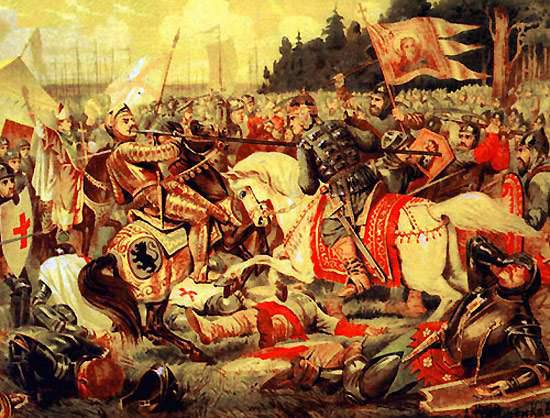
Neva battle. Alexander Nevsky inflicts a wound in the face of the leader of the Swedish army. 1240 Artist A.D. Kivshenko
Swedish army left without a leader. Neither the Ulf Faci Jarl nor the bishops in knightly armor could replace him. The chronicler draws a duel between Russian Prince Alexander Yaroslavovich and the future Yarl of Sweden Birger: "... Begle a lot of them, and the queen himself should embed the seal on his face with a sharp copy." The duel of two commanders, in fact, predetermined the outcome of the Neva battle.
In the meantime, the brutal slashing continued. Russian warriors increased the pressure on the enemy. The Swedes, somehow preserving the remnants of order, retreated to the courts. The chronicler, an eyewitness, a nameless warrior of Prince Alexander Nevsky in the "Life" spoke about the exploits, especially noted six soldiers. The warrior of Gavrila Oleksich, rushed along the gangway on a horse, to the auger, chasing after the Swedes, who carried the wounded Birger out of the battle and saved the noble bishop. There was an unprecedented battle of a lonely equestrian rider with a whole crowd of Swedes on the deck of a ship. The squires and bodyguards managed to defend their leaders and dump Gavrila Oleksich together with his horse to the Neva. However, the brave man was able to quickly get out of the water on the shore and again rushed into battle. He immediately began to cut himself with the Swedish "voivod" who tried to gather around him soldiers. Princely squad killed him.
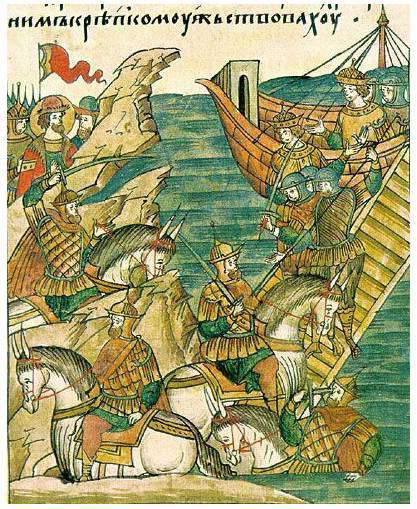
Neva battle. Feat Gavrila Aleksic. Facial Chronicle of the XVI century
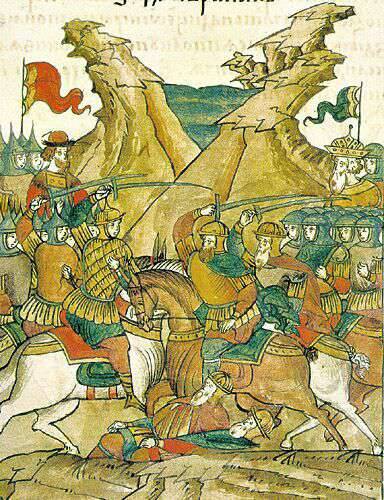
Fight Gavrila Aleksic with a Swedish governor. Facial Chronicle of the XVI century
The Novgorodian hero, named Sbyslav Yakunovich, fought alongside Prince Alexander. Bravely, “having no fear in his heart,” he attacked the Swedes with only an ax in his hands and managed to defeat several enemies. Prince catcher Yakov Polochanin (a native of Polotsk, who only recently came to Novgorod together with the court of a young princess), deserved praise from the lips of Prince Alexander himself. Warrior boldly drove with a sword in his hands on the Swedish squad and "courage a lot." Novgorod Misha led the foot army. He fought bravely in the front ranks of the Russian soldiers. His Pescans managed to capture three Swedish augers and cut through their bottoms. Misha's foot party simultaneously restrained the onslaught of the enemy soldiers who remained on the ships and cut off the knights, overturned by the blow of the prince's cavalry, the path to the ships.
The retainer Sawa was among the first to break into the very center of the Swedish camp. The warrior was able to make his way to the golden-tent of the royal generals and cut off the supporting pole. The fall of the tent caused confusion among the enemy soldiers, and the Russians were even more inspired to fight. Distinguished in battle and the princely close warrior Ratmir. Surrounded by the Swedish knights, he fought fiercely and stubbornly from them, he smacked many. Having received many wounds, the brave warrior fell to the death of the brave on the battlefield.
As a result, the Swedish army was defeated. The sudden and violent attack of the Russian rati, the wounding of Birger, the death of many noble knights and bishops (bishops), the sinking of the three Misha’s Novgorodians on foot, in the end, caused panic and the flight of the Swedes. Despite their numerical superiority, the knights retreated to the augers standing at the shore and began to load ships in fear. The anchor lines were cut, and the ships left the coast in great disarray. Some enemy warriors, who did not manage to get on the ships, swam to the other side, where the Igorians met them. The rout was complete, only part was able to escape on ships, leaving a large number of dead on the banks of the Neva. So ended July 15 1240, the famous Battle of the Neva.
The Swedes did not dare to continue the battle, although they retained most of the ships. The Swedish flotilla ingloriously headed for the mouth of the Neva. Battlefield left for Novgorod. The winners got rich trophies: knightly weapons, armor, horses, tents and supplies. The warriors of Prince Alexander collected the bodies of the dead noble knights, “the top of the ship are two" and "empty ship and to the sea" and "sank (they) on the sea." The rest of the conquerors, who remained forever on the Neva bank, "a fossil pit, in the metropolitan area (s) in the byschisla nu". Glorious victory was obtained by a little blood. In the battle fell only twenty Russian soldiers. The Novgorod warriors, who died the death of the brave in the Battle of the Neva, were commemorated during church services for more than three centuries!
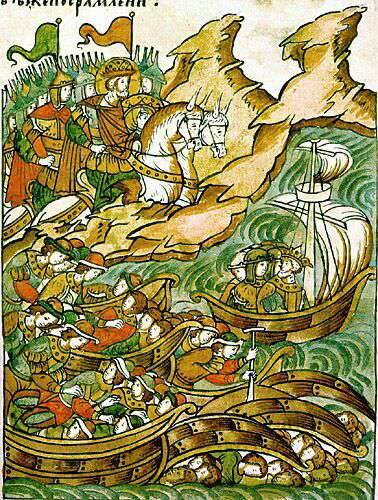
The flight of the Swedes to the ships. Facial Chronicle of the XVI century
Results of the Neva Battle
The strategic importance of the Battle of the Neva was immense. The Neva victory prevented Novgorod from losing the shores of the Gulf of Finland and prevented Russia from interrupting the northern trade route. Novgorod, despite the tough struggle with the Order and the Swedes, was associated with trade with the West. Novgorod’s trade with the West with its handicraft, trade and eastern transit goods remained for the Novgorod boyars and merchants the main source of prosperity and identity. The capture of the Nevsky Corridor by the Swedes in Izhora Pyatina deprived Novgorod of independent access to the Baltic and Western Europe, made them dependent on the location of the Swedes, creating a mortal threat to the economy of Novgorod Russia, and after it the political independence of Novgorod.
Alexander did not allow the enemy to seize a strategic springboard for the march on Novgorod. A simultaneous strike on Novgorod from the west (German knights) and from the north (Swedes) could have disastrous consequences. Alexander Yaroslavich destroyed this scenario, began to destroy the enemies separately. After the Nevsky defeat, the Swedes hurried to conclude peace with Veliky Novgorod and swore that they would not attack the Russian lands - “the king of the king would give himself a letter and an oath, and he didn’t come to Russia at all”.
At the moment of general depression and confusion caused by the invasion of Batu's troops and the simultaneous pressure of Western rulers on the western and north-western frontiers, the Russian people in the victory of Alexander Nevsky saw the halo of the former glory of Russian weapons and the foreshadowing of their future greatness. Alexander Yaroslavich received the honorary nickname “Nevsky” for his commanding art, fearlessness and courage shown in the Battle of the Neva. And in the folk tales and legends there are still “Alexander the Terrible Eyes”, “Alexander the Terrible Shoulders” and “Alexander the Invincible”.
It must be said that judging by the Novgorod chronicles, Novgorod, contemporaries of the battle between Alexander and the Swedes, appreciated his talent as a commander, but did not recognize the all-Russian significance of the prince's activities. Soon after the Neva victory, Prince Alexander quarreled with the people of Novgorod, and he was "shown the way out of the city." The cause of the quarrel is unknown. Perhaps the prince wanted to build on successes and go on the counteroffensive, and the Novgorod boyars were afraid of his activity and popularity among ordinary people. The prince went to his father in Pereyaslavl Zalessky.
In memory of this victory, already in the 13th century, a wooden chapel in honor of the holy Prince Alexander Nevsky was erected at the site of the battle with the Swedes. In 1710, Tsar Peter I founded at the mouth of the r. Black St. Petersburg Alexander Nevsky Monastery (from 1797, the Alexander Nevsky Monastery). In addition, by decree of Peter Alekseevich, the church of St. Alexander Nevsky was consecrated in the presence of the dilapidated chapel in 1711, and in 1712. In modern Russia, a monument-chapel is erected on the territory of this church, and a monument to Alexander Nevsky is erected at the mouth of the Izhora.
Alexander Nevskiy. Artist Y. Pantyukhin
Application. Novgorod first chronicle of the senior izvoda:
In addition, 6748 [1240]. Coming in magnitude, and Murman, and Sum, and “in ship” a lot of things; Have a prince and his sons; and stash to Nev estuary, hot spring Ladoga, just the river and Novgorod. and the whole Novgorod region. But still prejudices, prematurely and human loving god, kill and protect you from foreign tribes, as if in vain labor without divine commandment: come to Novogorod, like Thou cometh to Lados. The prince Oleksandr not tarry nor less with Novgorod and ladozhan Come on AEs, and pobЂdi I have the power of the holy Sophia and prayers Lady Theotokos and prisnodЂvitsa Maria July mЂsyatsa unto 15, in memory of St. Kyurika and Ulitka in nedЂlyu on Sbor svyatyh father 630 , like in Chalcedon -; and that was great svoma. And that was killed by voivod ihm, Spiridon; But the inons of the creature, like and writing, would be the same; and many. many ih pade; and on the ship two vatshih men, save yourself to the void and to the sea; and prokh ih, the fossil of a pit, are in the mecca of the beschisla; and the lines of mannose are ulcers; and in that night, not waiting for the amount of money, shame from the odds.
Novgorod the same pada: Kostyantin Lugotinits, Gyuryata Pineshchinich, Usamt, Jerking Neszdylov son of a tanner, and after all 20 husband with lados, or me, god of gods. Prince Oleksandr of Novgorod and Ladozhan came to health and health, his god, and the holy Sophia and the prayers of all saints.
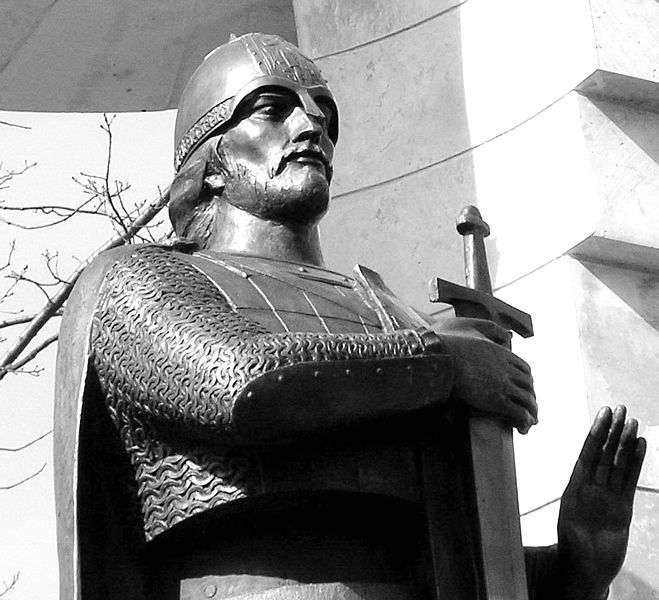
Monument-chapel at the church of Alexander Nevsky in with. Ust-Izhore (fragment)
To be continued ...
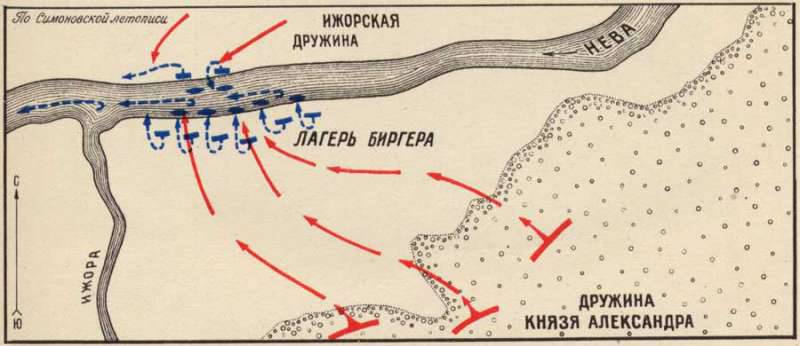
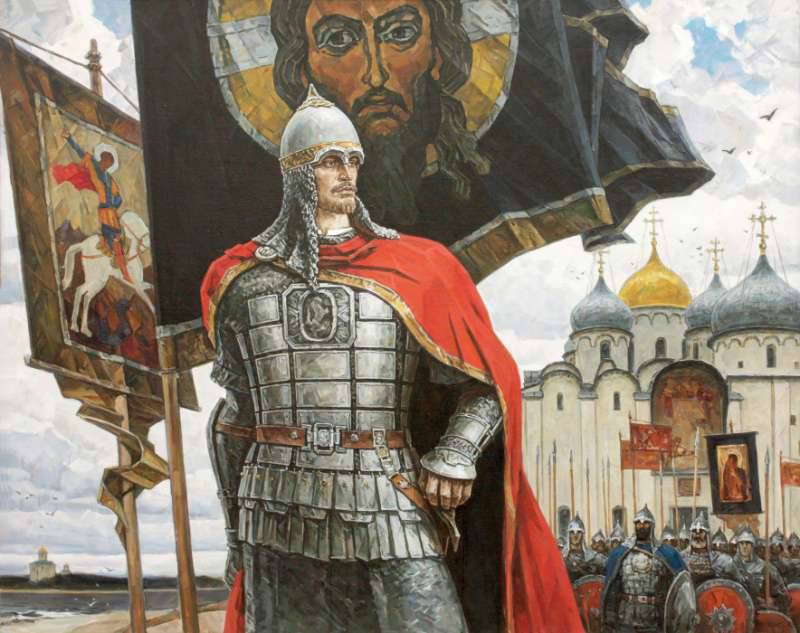
Information